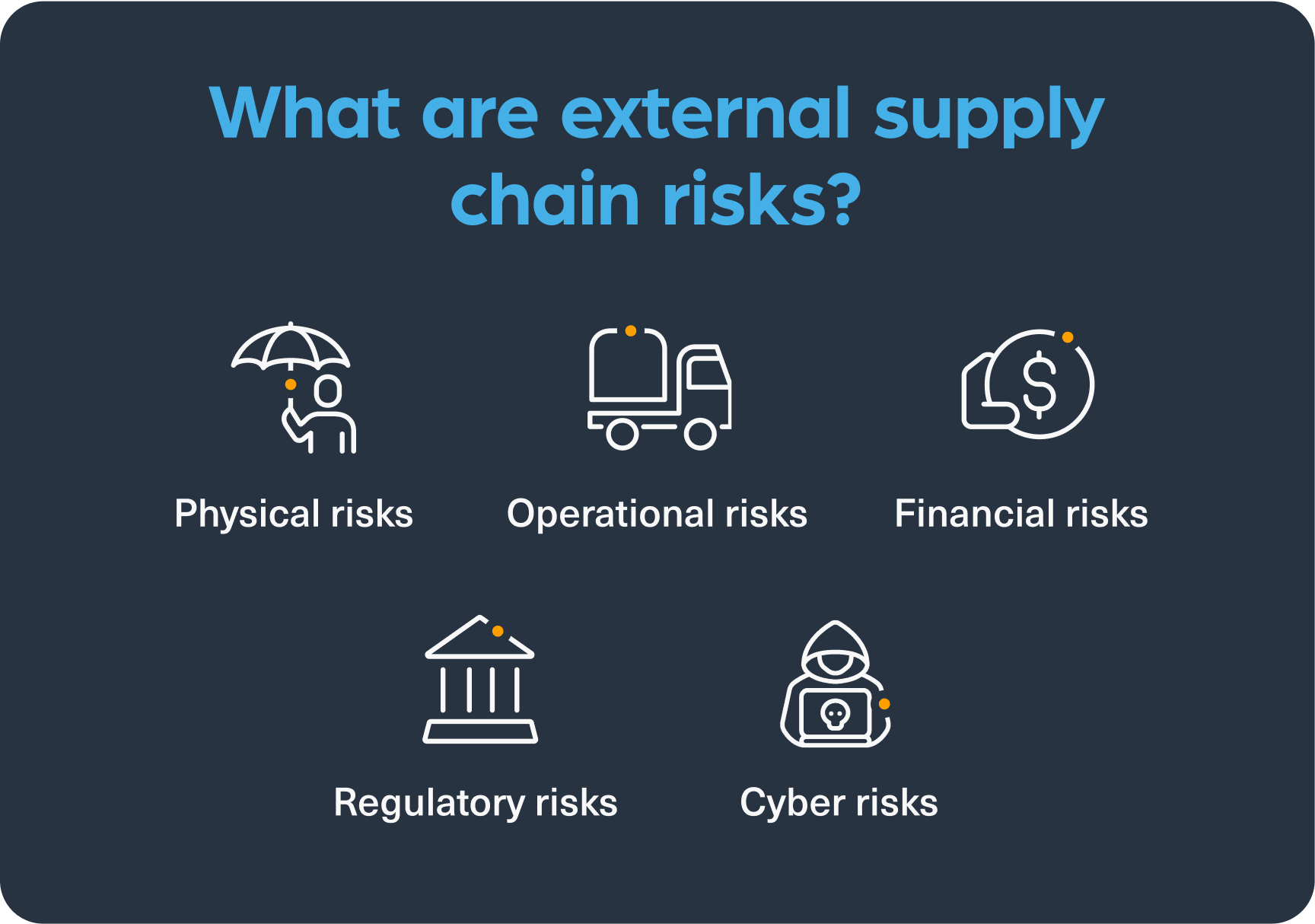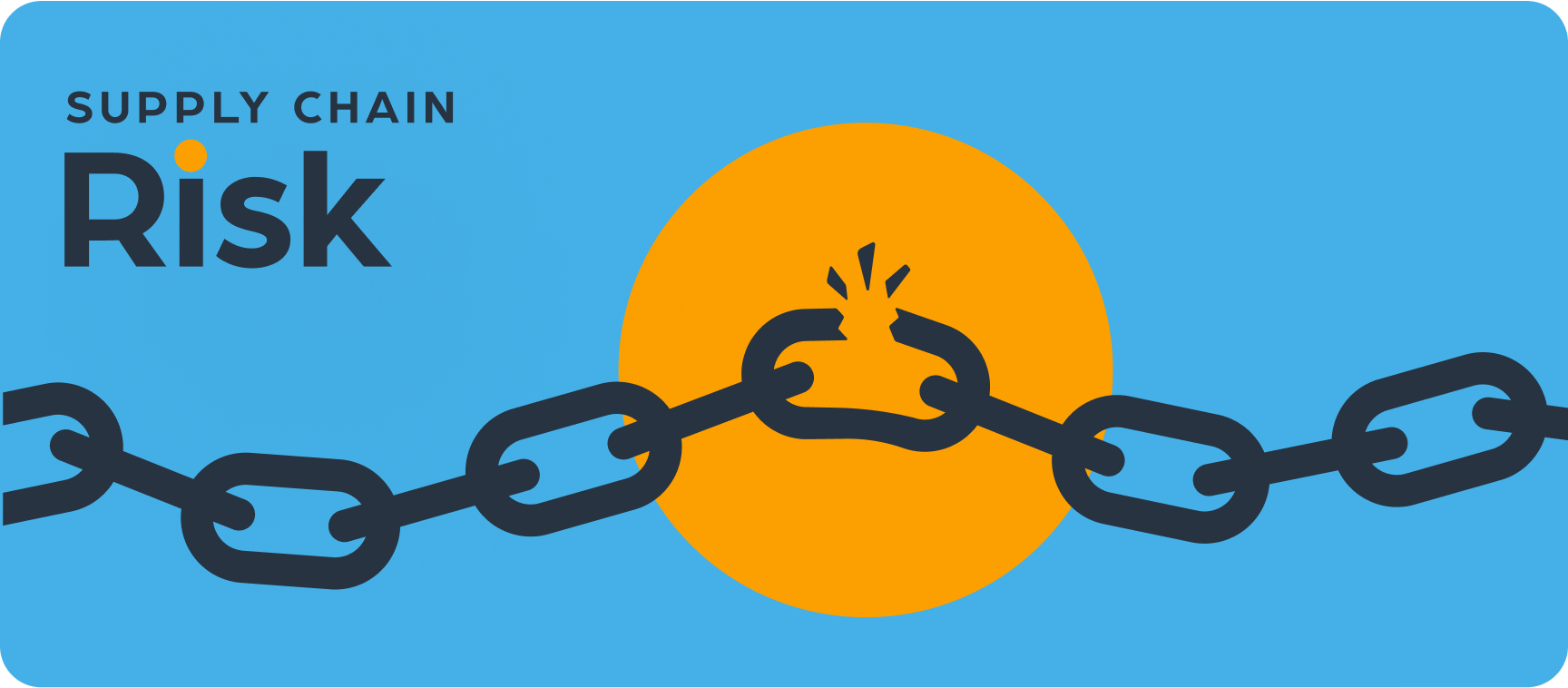The globalization of business has led to growing competition and businesses are increasingly reliant on their supply chains to remain competitive. However, globalization has also led to increased risk in the supply chain as disruptions and events in one part of the world can quickly cascade through the supply chain and affect businesses around the globe.
As businesses turn to external supply chain risk management solutions for help with risk analysis, these solutions also run into their own set of challenges. Supply chain risk management solution providers are experiencing difficulty in monitoring the most current data in order to provide their customers with the most accurate risk analysis.
In this blog post, we’ll cover the different risks that can affect supply chains, what challenges supply chain management solutions are facing, and how they can overcome these challenges by relying on web data to track potential supply chain risks before they occur.
What is supply chain risk?
Supply chain risk relates to any risk that could damage a company, its customer, or its reputation. These risks can be either internal or external. Internal risks are those that arise directly within a supply chain, such as logistical or transportation issues. This might look like a company experiencing a technical malfunction that delays shipping, which can impact its reputation and bottom line.
External risks are outside a company’s control and can dramatically influence a company’s supply chain, such as extreme weather conditions that cause late shipments. Suppliers themselves can also be the cause of external supply chain risks, as they’re also susceptible to different risk factors. When suppliers face issues such as financial troubles, regulatory issues, or cyber-security risks, the repercussions can have an impact on all of their stakeholders, whether it’s the companies they supply, distributors, shipping partners, manufacturers, or retailers.
Additionally, events happening on the other side of the world can have a huge impact on a business’s supply chain. When Ever Given, a container-carrying ship got wedged in the Suez Canal in March 2021, supply chains around the world were impacted. Not only was all the cargo on the ship itself delayed, but all ships were prevented from using a busy canal that represents 12% of global trade.
How are organizations managing external supply chain risk today?
Organizations today are relying on a host of different supply chain management tools, each one with its own unique capabilities. However, all of these tools share one common goal: to help businesses monitor and manage internal and external risks.
One of the most popular supply chain management tools is supply chain risk management software which helps businesses identify and assess risks associated with their supply chains. Other popular supply chain management tools include supply chain mapping software and supply chain analysis software. These tools help businesses track and analyze their supply chains, identify potential risks, and develop strategies to minimize those risks.
With any type of software used to monitor supply chain risks, the solutions are only as good as the data they rely on. Managing external risks involves staying on top of the latest news and trends, so whether a company turns to risk management or mapping software, the results they get are reliant on the quality and quantity of web data these systems can analyze.
What are external supply chain risks?
There are many external risks associated with supply chains, as they are often complex and span multiple countries and organizations. Some of the most common supply chain risks companies need to contend with include:
1. Physical risks: These risks include natural disasters, political instability, and terrorist attacks that can disrupt the supply chain.
2. Operational risks: Problems with suppliers, manufacturing, storage, obtaining materials, and delivery and transportation delays can disrupt the supply chain.
3. Financial risks: Fluctuating financial markets as well as costs for raw materials can also have an effect on the supply chain.
4. Regulatory risks: A change in government regulations as well as disputes over legal or contractual obligations can have an impact on supply chain management.
5. Cyber risks: As more supply chain management systems are moved online, cyberattacks can affect different aspects of a business, including its supply chain software.
Supply chain risks can have a major impact on a company’s bottom line. To help organizations manage these risks, risk management solutions need to be able to monitor as much data as possible about suppliers, environmental factors, emerging trends, and breaking news in order to remain up-to-date on risk factors before they turn into concrete challenges.

The main challenges to monitoring external supply chain risk
There are several challenges when it comes to monitoring external risk factors for supply chain management tools. As supply chains are constantly evolving, it can be difficult for risk management solutions to identify and keep track of all the external risk factors. Additionally, as risks can change over time, there’s a need to constantly monitor and update the supply chain management tools accordingly.
What these supply chain management solution challenges come down to is not having a stream of meaningful web data on which to base the analysis of potential risks. This challenge is made up of several factors:
- Data is often spread across multiple systems and silos and it can be difficult to get a complete and accurate picture of the supply chain
- Data can also be inaccurate or out-of-date, which can lead to decision-making errors
- The vast amount of data that is available can be overwhelming, making it difficult to identify relevant information
As a result, supply chain managers must often spend a significant amount of time and resources sourcing, consolidating, and interpreting data from various sources. Still, web data is an integral part of effective supply chain management. Therefore, adopting the right web data service to provide risk management tools with trustworthy sources for relevant data is essential to overcoming these challenges.
The solution? Web data sourced from News API
As the world becomes more and more digitized, the importance of data grows exponentially. It’s becoming essential to have the right web data provider to help navigate any external influences that may affect a company’s supply chain.
A News API can be a powerful tool for supply chain risk management software. By selecting a News API to help track the latest news stories related to your supply chain, you can get a real-time picture of what’s happening on the ground and identify potential risks before they become problems.
Take for example Webz.io’s News API. Leading supply chain management solutions turn to us for help with monitoring the most up-to-date news on their customers and their suppliers. Our News API provides supply chain monitoring and management solutions with:
- Wide coverage – News API gathers web data from millions of sources in over 170 languages, meaning the data your supply chain management tool receives is reliable and balanced.
- Real-time data feeds – With News API’s low latency, you’ll receive noise-free web data on the points you want to focus on. News data is transmitted in near real-time, ensuring that your solutions rely on the most up-to-date data.
- Contextualized data – Part of knowing where the risk lies in being able to contextualize web data. Webz.io’s News API tool offers the full picture, so you’ll receive text along with metadata, publication details, sources, author information, and more, all in one clear format.
Archived data – News API pulls web data from over 50TB of historical as well as archived web data from sources like news, blogs, and forums, so you can rest assured you’ll have all the information necessary to inform supply chain decisions.
To Wrap Up
Supply chain risk management is constantly evolving, but one thing remains constant: the solutions you offer your end-users should be supported by solid web data. While there are many ways to source data online, it’s important to gather information from as many sources as possible in order to be prepared for any type of risk. Using a News API alongside more traditional data sources is one of the best ways to improve the total package you provide your customers who rely on you for supply chain solutions.
Talk to a Webz.io expert today to learn more about how News API can help support your supply chain management solution




